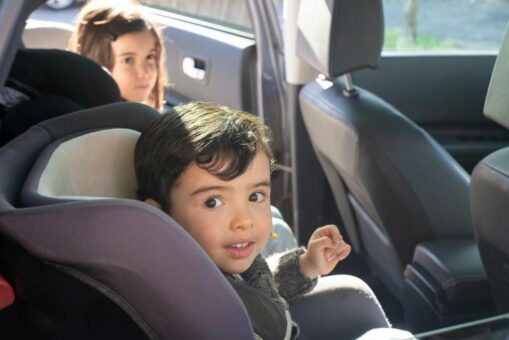If you’re planning a family trip to Greece, especially the stunning island of Crete, ensuring your child’s safety on the road should be a top priority. Whether you’re exploring ancient ruins, breathtaking beaches, or scenic mountain villages, traveling with the right child car seat isn’t just about compliance with Greek laws—it’s about giving your little ones the best protection during your journey.
This guide will walk you through the child seat laws in Greece, tips for using them, and how our car rental service in Crete can make your family’s trip safer and stress-free.
Child Seat Laws in Greece: Your Quick Guide to Compliance
Greece has strict regulations regarding child car seats to ensure the safety of young passengers. These laws align with European Union safety standards, emphasizing the use of age- and weight-appropriate car seats. Here’s what you need to know:
- Mandatory Use:
- Children must use a car seat until they are 12 years old or 1.5 meters (150 cm) tall—whichever comes first.
- For children weighing more than 36 kg, adult seatbelts can be used if they fit properly across the chest and hips.
- Non-Compliance Penalties:
- Drivers who fail to secure children in an appropriate child seat can face a €350 fine, and their driver’s license and vehicle registration may be suspended for 60 days.
- Why It Matters:
- Regular seatbelts are designed for adults and can cause injuries to a child in the event of a collision.
- Child seats are specifically designed to distribute impact forces and provide better head, neck, and spine protection for children.
Types of Child Car Seats: Which One Does Your Child Need?
Choosing the right car seat is essential for both safety and compliance with Greek law. Here’s a breakdown of the car seat categories and their recommended use:
Infant Car Seats (“Egg Seats”)
- Suitable for: Newborns and infants up to 13 kg or around 12–15 months old.
- Position: Rear-facing to provide maximum neck and spinal protection.
- Key Features: These seats cocoon the baby and distribute impact forces during collisions.
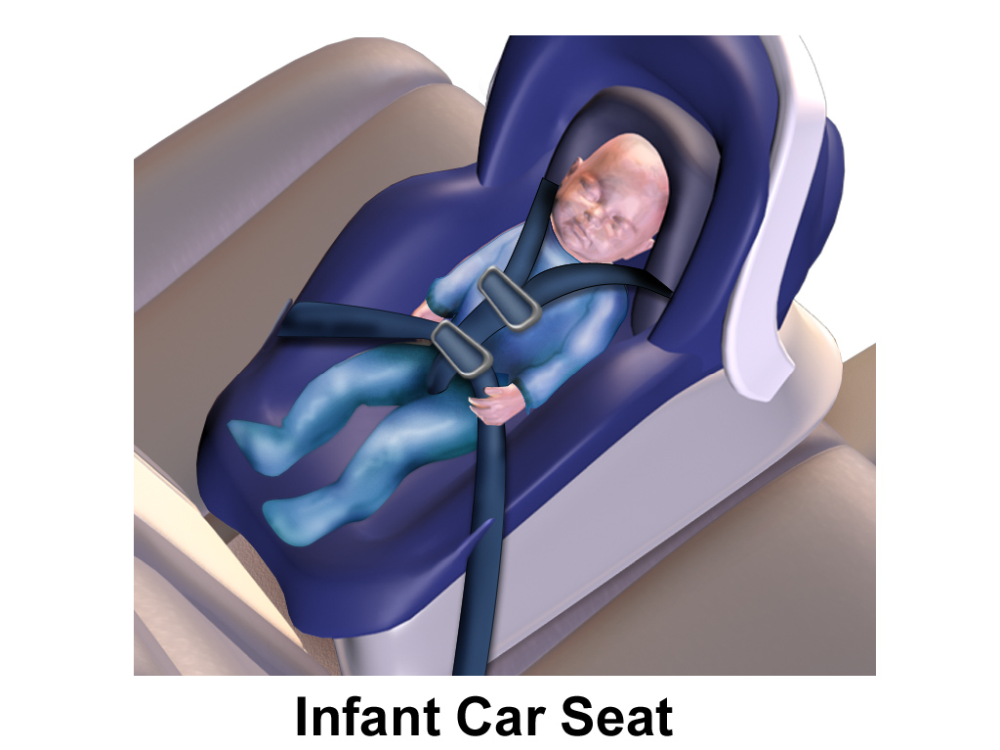
“Infant Car Seat” by BruceBlaus is licensed under the Creative Commons Attribution-Share Alike 4.0 International license. Source: Wikimedia Commons.
Convertible Seats
- Suitable for: Toddlers weighing 9–18 kg (approximately 9 months to 4 years old).
- Position: Start rear-facing and transition to forward-facing as the child grows.
- Key Features: Long-lasting and adjustable, these seats adapt to your child’s changing needs.
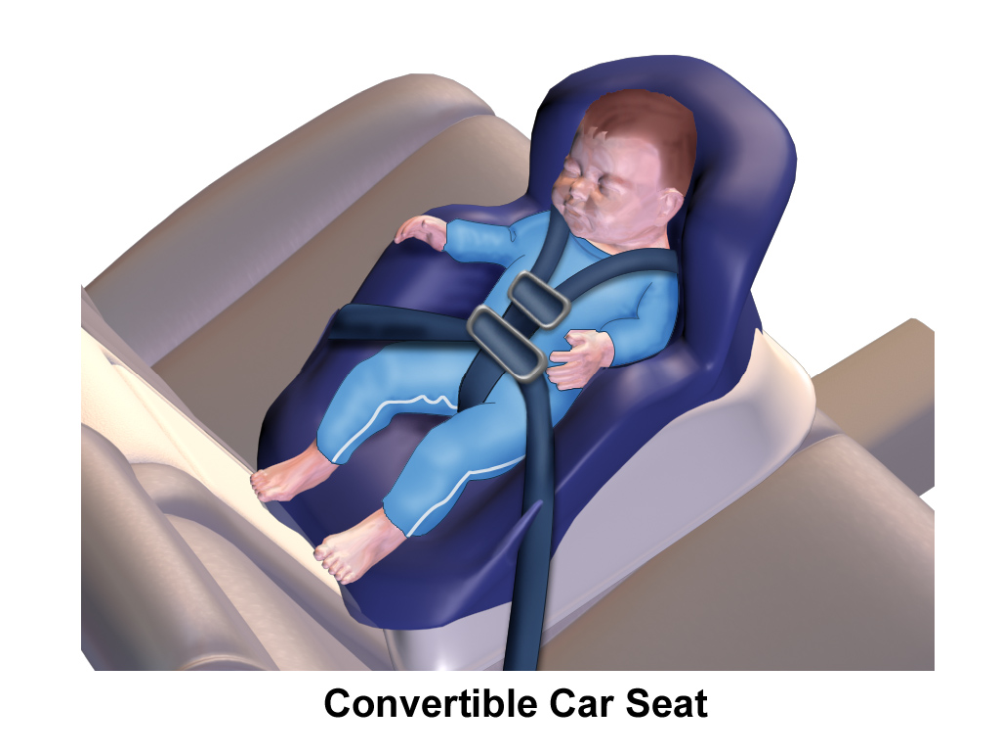
“Convertible Car Seat (Toddler)” by BruceBlaus is licensed under the Creative Commons Attribution-Share Alike 4.0 International license. Source: Wikimedia Commons.
Booster Seats
- Suitable for: Older children 15–36 kg or around 4–12 years old.
- Purpose: Elevates the child to ensure that the car’s seatbelt fits properly across their chest and hips.
- Types: Available with or without backrests (high-back boosters provide better side-impact protection).
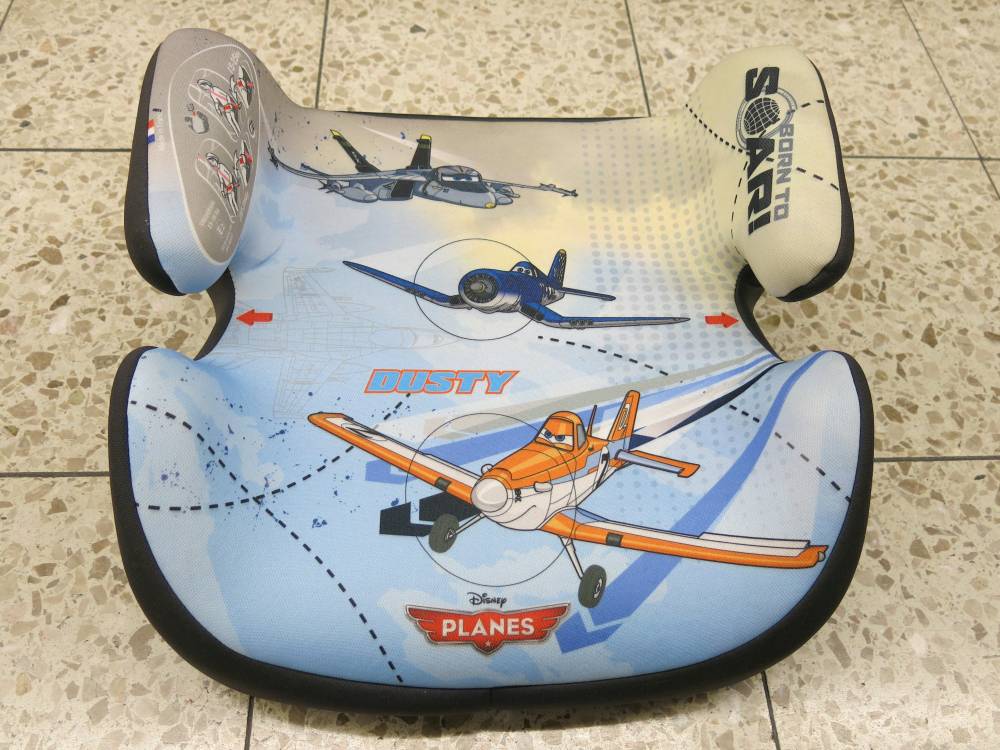
“Child seat booster seat, approved to ECE-R 44/04, class 2 and 3 (15 to 36 kg)” by Beademung is licensed under the Creative Commons Attribution-Share Alike 3.0 Germany license and the Creative Commons Attribution-Share Alike 3.0 Unported license. Source: Wikimedia Commons.
Combination (i-Size) Seats
- Suitable for: Children 0–36 kg, designed to grow with the child from birth until they no longer need a booster seat.
- Key Features: These multi-functional seats provide rear-facing, forward-facing, and booster configurations.
Pro Tip: Always check for ECE R44/04 or i-Size certification labels, which confirm compliance with European safety standards.
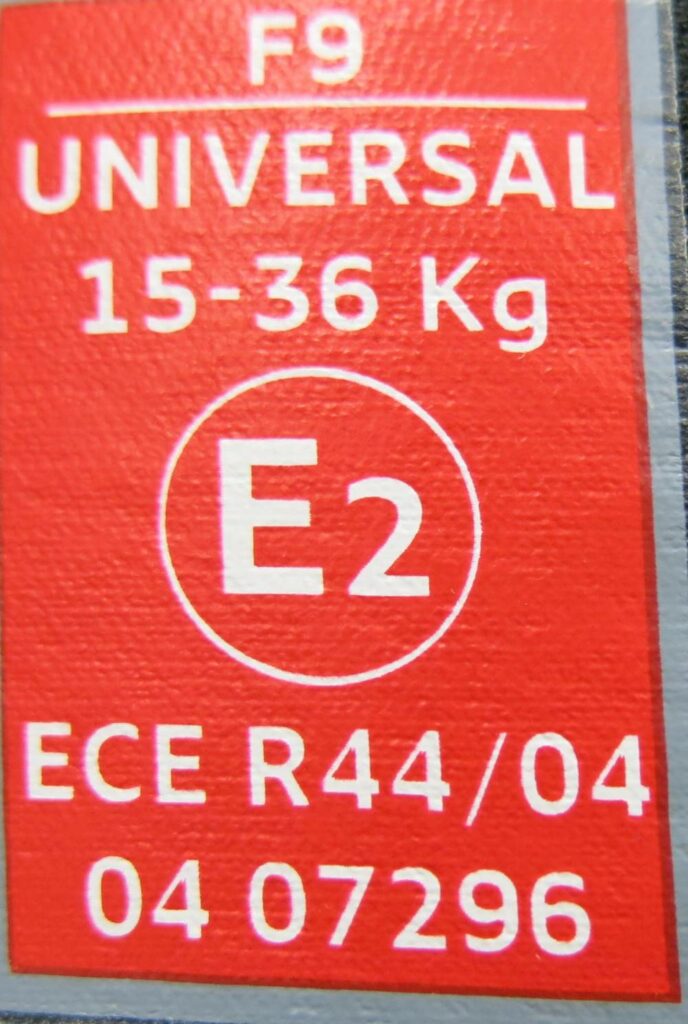
“ECE-R 44/04 Universal” by Beademung is licensed under the Creative Commons Attribution-Share Alike 3.0 Unported license and the GNU Free Documentation License. Source: Wikimedia Commons.
Why Rear-Facing Seats Are Crucial for Infants and Toddlers
Research and safety experts emphasize the importance of keeping children rear-facing for as long as possible—preferably until they outgrow the rear-facing weight/height limit of their seat. This position provides better support for the head, neck, and spine in the event of a collision.
- Legal Recommendation in Greece: Rear-facing travel is required for infants up to 13 kg, and highly recommended for toddlers until 18 kg.
5 Tips for Safe and Stress-Free Family Road Trips in Crete
Crete is a beautiful island, but its winding mountain roads, narrow village streets, and unique driving conditions can present challenges for families traveling with kids. Here are some tips to ensure a safe and enjoyable journey for you and your little ones:
- Install Child Seats Properly
- Use ISOFIX anchors if your car has them, as they provide a secure and easy way to install child seats.
- Double-check that the child seat is properly attached, with no loose straps or wobbles.
- Choose the Safest Seat Position
- Place the child seat in the middle of the back seat, which is statistically the safest location.
- Never place a rear-facing seat in the front seat if there is an active airbag.
- Plan for Babies and Infants
- Limit time in an infant car seat to 2 consecutive hours to avoid spinal stress and breathing issues.
- Take regular breaks during long drives to allow your baby to stretch and rest comfortably.
- Dress for Safety and Comfort
- Avoid bulky coats or blankets in the car seat, as these can create a loose harness fit. Instead, use thin layers and cover the child with a blanket after securing the harness.
- Pack for the Journey
- Bring essentials like snacks, water, toys, or games to keep kids entertained.
- Plan stops at Crete’s charming villages or scenic viewpoints to let the kids stretch their legs and enjoy the beauty of the island.
Frequently Asked Questions (FAQs)
- Are child seats mandatory in Greece?
- Yes, children under 12 years old or 1.5 meters tall must use an appropriate child car seat.
- Can I bring my own child seat to Crete?
- Yes, as long as it meets EU safety standards like ECE R44/04 or i-Size.
- What happens if I don’t use a child seat?
- You risk a €350 fine, suspension of your license, and most importantly, putting your child at risk.
- Do your rental cars include child seats?
- Yes, we offer child seats for an additional fee. Just let us know your needs during booking.
Conclusion
Exploring Crete with your family is an unforgettable experience, and we’re here to make it safer and more enjoyable. By following Greece’s child seat laws and renting from a service that prioritizes safety, you can relax and focus on making memories with your loved ones. At Monza Rent a Car, we offer a wide range of reliable vehicles and optional child safety seats (baby or booster seats) for just €2 per day, per seat. With no deposit required, free cancellations, and excellent customer service, booking with us ensures a hassle-free and affordable travel experience. Reserve your car rental with us today and let us help you travel worry-free!








